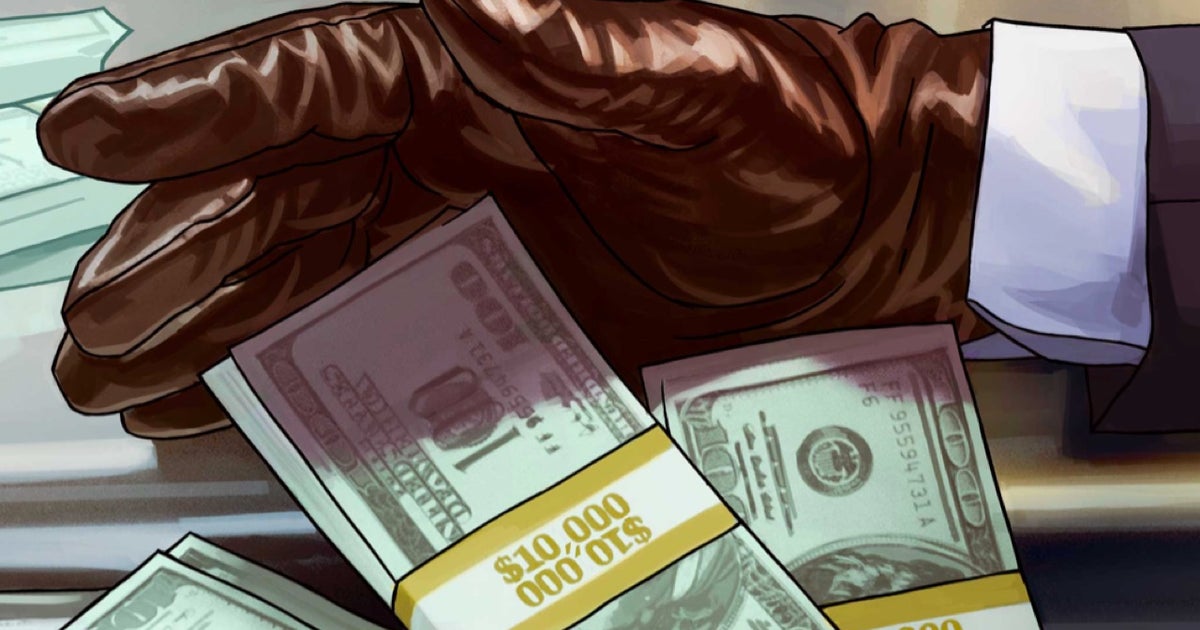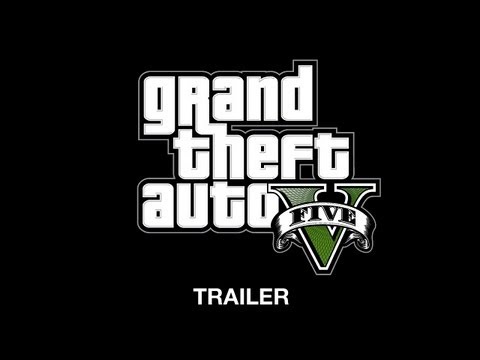Every few weekends, my wife and I go for a drive in Los Santos. Itineraries vary. Sometimes we get a submarine and explore the oceans. Sometimes, inspired by shows like Million Dollar Listing and Selling Sunset, we head up to the Hills and have a pleasant in-game evening racing through rich people’s backyards. My wife knows the game much better than me, which makes for an unusual dynamic. I know Los Angeles, which Los Santos is based on, but she is far more familiar with Rockstar’s version. In other words, I’m often a backseat passenger in the endless lateral tracking shot that defines the common experience of both of these car-centric cities.
A few weeks back, we avoided the usual stuff, though, and ended up somewhere I had not seen before. We’d decided not to jump the fence at the military base and try to steal a jet – a pass-the-pad process that for some reason we’ve taken to calling “dipping it low”, in honour, perhaps, of the tricky fence position, the chassis-scraping jump, and the Christina Milian banger. We didn’t even head to Nakatomi Plaza, where my wife has an apartment, to spend a happy few hours parachuting off the roof. Instead, in a freeway tunnel somewhere, I was cruising along and I suddenly saw a gap in the wall. “Oh, down there!” my wife said. “It goes deep.” And it does.
I nosed our car through the gap and we spent the next hour or so exploring this strange underside of Los Santos, rattling through storm drains, sewers, and sections of the subway system. It was classic GTA: a world of human detailing, but just about designed to be experienced in a car. It felt sneaky and illicit. And it was also sort of dizzying. I know the city above relatively well now, just from years of watching my wife play. But all of this was lurking underneath the whole time? How did it get there? Why is there so much city under the city in this game?
The answer to this question – and to most things in my life – resides in one of my favourite books of the last 10 years. A Burglar’s Guide to the City, by Geoff Manaugh. I know I’ve mentioned this before on Eurogamer. I will not stop mentioning it until everyone has a copy, frankly. It’s a book that explores the fascinating ways that criminals utilise the urban environment. It’s the book I most often give as a birthday present. It’s one of those rare books that genuinely changes the way you look at the world.
Part of Manaugh’s thesis is that burglars are super-users of the environment. They’re incredibly creative when it comes to moving about the urban world, dropping in through the roof, smashing through walls, jimmying windows, and drilling. Oh, the drilling.
Inevitably, this is a book about LA as much as it’s a book about burglary. Inevitably because, as Manaugh memorably points out, for a period in the 1990s, LA was the bank robbery capital of the world. A lot of this came down to the freeway system: Manaugh talks about stop-and-rob banks, located near freeway on- and off-ramps that were so conducive to fast getaways the banks could essentially be robbed on a whim. These are banks where it would have been stupid not to rob them. But there’s also something else. LA is a city unlike any others. Hugely wide, hugely scattered, home to all kinds of weird architectural follies and preoccupations, there’s just something about this place that encourages people to be creative with the landscape and the way they use it.
All of which is to say this:
“In June 1986, employees at a First Interstate Bank in Hollywood, at the corner of Sunset and Spaulding, in a building that now houses a talent agency, began to report strange mechanical sounds coming from the ground near the vault.”
So begins Manaugh’s telling of the story of the Hole in the Ground Gang, some of the most daring and creative bank robbers to ever play the game.
The strange mechanical sounds were investigated, Manaugh continues, but the sensors had not been tripped and nobody could find any signs of anything awry. The police dismissed the reports as “just a rat running around inside the walls or something.” But the sounds continued for a week. The power sometimes cut out along with the phones. “Then,” writes Manaugh, “the internal Muzak system abruptly kicked in late one evening, startling a manager who was there alone working overtime.”
All of this was the result of a small team of burglars excavating their way into the vault. Muzak aside, they worked meticulously. They took their time. They knew the city’s subterranean waterways and they clearly understood a lot about mining. They had access to storm-sewer maps, utilising connections that “were by no means obvious, knowing that a manhole several blocks away from a bank might take you within a few hundred feet of the vault.”
LA, Manaugh reveals, is riddled with underground passages, buried rivers, corridors and hallways and drains. He cites the landscape architect Jessica Hall, who once explained that the fog at the intersection of Beverly and Rossmore is due to a perennial creek that runs underground there. The Hole in the Ground Gang knew this kind of stuff. They “would have needed intimate knowledge of the ground itself, of the actual geology of Los Angeles” in order to pull off their heist.
To rob the vault, elaborate tunnels were created, and the burglars eventually moved through them and the connecting sewers beneath West Hollywood in Suzuki four-wheelers. These vehicles were used to move “more than $172,000 in cash and as much as $2.5 million worth of personal belongings ripped from the safe-deposit boxes,” Manaugh says. They got away with it, too. The statute of limitations has now passed. Manaugh talks to a former investigator who just wants to meet the gang and chat about their work, perhaps over a “no-hard-feelings beer.”
I love this story. The audacity of it. The ingenuity and planning and deep knowledge of the deep city. And it’s this burglary, I would suggest, that has helped shape the geology of Los Santos in GTA 5. The game world is, in a literal sense, built upon the landscape that the Hole in the Ground Gang made visible. The game is haunted by it.
Even my limited understanding of the game makes this clear. GTA 5’s campaign revolves around a series of heists, and at least two of them invoke the work of the Hole in the Ground Gang. In the Jewel Store Job, part of the team escapes on bikes through sewers and storm drains, before emerging into the riverbed. It’s a fantastic sequence, involving great speed and the innate vulnerability of motorbikes as they move through this looping, elbowy network of spaces.
Later, in the final mission, The Big Score, players can choose to drill into the vault being robbed from below, while the building’s staff are held-up at gunpoint above. Again, the mission culminates in another escape through the sewers and storm drains and bodged-together tunnels of Los Santos, this time in an actual car.
Lots of films seem to have heard of the Hole in the Ground Gang: it’s referenced in Speed and in the 2000s remake of The Italian Job. There’s a special mystery and a dark glory about crimes like this, that take place below our feet, without us knowing. Crimes that briefly illuminate a world we live alongside without realising. GTA 5, though, goes further than most. The topside/underground flow of the game, with its endless chases, its endless freeform connections, makes me feel as if Los Santos has been marinated in the work of the Hole in the Ground Gang. It’s in there deep. I feel like the game would be a different shape without this foundational story.
Rockstar’s developers are not the only people haunted by this stuff, though. Manaugh ends his narrative of the Hole in the Ground Gang by telling the story of a second attempted robbery by the same team. A year after the first heist, they struck at the intersection of La Cienega and Pico, in a job that would have robbed two banks simultaneously.
The gang were interrupted mid-job, although they escaped on their Suzukis once more. If they’d succeeded, Manaugh says, the haul would have been between $10 and $25 million. But beyond the money, Manaugh also describes the human cost, including “the disoriented, almost psychedelic” reaction of one of the first FBI agents on the scene. “The presence of two bank tunnels, the second of which was only discovered hours after the first, inspired an uneasy, vertiginous sense that more tunnels might – in fact, probably would – be found. Law enforcement “started getting these nagging mental images of a network of tunnels under every bank in West LA… of waking up one morning and finding five or 10 or 100 bank vaults simultaneously breached and stripped.”
I can appreciate this feeling just a little. My own grandfather was an LA cop in the 40s and 50s and was completely consumed with the bank robber Willie Sutton. Sergeant Donlan spent his time patrolling Pershing Square, but his heart belonged to Sutton. He felt personally insulted by Sutton. He felt that it was his destiny to catch him at some point, interrupting one of his many crimes. He never did. But he was still mentioning him at family dinners as late as the 1990s.
“The burglar,” Manaugh concludes, “is a three-dimensional actor amidst the two-dimensional surfaces of the city. This means operating with a fundamentally different spacial sense of how architecture should work.” And isn’t that just GTA in microcosm? Isn’t that games and the people who are eternally drawn to play them?
All the details of the Hole in the Ground Gang in this piece come from A Burglar’s Guide to the City, by Geoff Manaugh. Manaugh’s most recent book, written with Nicola Twilley, is Until Proven Safe: The History and Future of Quarantine. It’s completely brilliant too.


